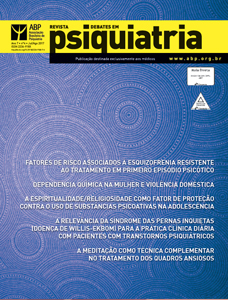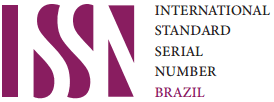Drug dependence in women and domestic violence
DOI:
https://doi.org/10.25118/2236-918X-7-4-2Keywords:
Substance-related disorders, gender, domestic violence, gender and healthAbstract
Psychoactive substance use among women is known to have predisposing factors, maintenance factors, and consequences that are different from those applicable to men. Domestic violence and intimate partner violence, in addition to being a serious problem, with a high incidence in the female population, represents one of the main factors associated with chemical dependence in women. A literature review was conducted to assess the current national and international scenarios of the impacts of domestic violence among female drug users. The study revealed an urgent need for programs designed to prevent domestic violence,Psychoactive substance use among women is known to have predisposing factors, maintenance factors, and consequences that are different from those applicable to men. Domestic violence and intimate partner violence, in addition to being a serious problem, with a high incidence in the female population, represents one of the main factors associated with chemical dependence in women. A literature review was conducted to assess the current national and international scenarios of the impacts of domestic violence among female drug users. The study revealed an urgent need for programs designed to prevent domestic violence,as well as for psychosocial and specialized care for children and women who have suffered this type of violence, with a view to preventing substance abuse as a maladaptive way of managing the suffering caused by violence. In conclusion, history of domestic violence should be investigated in the assessment and treatment of substance-dependent
women; violence interruption and protection of women should be treatment plan priorities.
Downloads
Metrics
References
Brasil, Código Civil. Lei 11340, 07 de agosto de 2006. www.planalto.gov.br/ccivil_03/_ato2004-2006/2006/lei/l11340.htm
Brasil, Secretaria Nacional de Políticas para as Mulheres, Ministério dos Direitos Humanos.Ligue 180: central de atendimento à mulher - Balanço anual – 2016 [Internet]. 2016 [cited 2017 Aug 03]. piaui.folha.uol.com.br/lupa/wp-content/uploads/sites/24/2017/03/balan%C3%A7o-Anual-180_2016-1.pdf
Weaver TL, Gilbert L, El-Bassel N, Resnick HS, Noursi S. Identi fying and intervening with substance-using women exposed to inti mate partner violence: phenomenology, comorbiditi es, and integrated approaches within primary care and other agency setti ngs. J Womens Health (Larchmt). 2015;24:51-6.
Zaleski M, Pinsky I, Laranjeira R, Ramisett y-Mikler S, Caetano R. Inti mate partner violence and contributi on of drinking and sociodemographics: the Brazilian nati onal alcohol survey. J Interpers Violence. 2010;25:648-65.
Devries KM, Child JC, Bacchus LJ, Mak J, Falder G, Graham K, et al. Inti mate partner violence victi mizati on and alcohol consumpti on in women: a systemati c review and meta-analysis. Addicti on. 2014;109:379-91.
Moore TM, Stuart GL, Meehan JC, Rhati gan DL, Hellmuth JC, Keen SM. Drug abuse and aggression between inti mate partners: a metaanalyti c review. Clin Psychol Rev. 2008;28:247-74.
Gilbert L, El-Bassel N, Chang M, Shaw SA, Wu E, Roy L. Risk and protecti ve factors for drug use and partner violence among women in emergency care. J Community Psychol. 2013;41:565-81.
Ferrari G, Agnew-Davies R, Bailey J, Howard L, Howarth E, Peters TJ, et al. Domesti c violence and mental health: a cross-secti onal survey of women seeking help from domesti c violence support services. Glob Health Acti on. 2016;9:29890.
Dutt on MA, Green BL, Kaltman SI, Roesch DM, Zeffi ro TA, Krause ED. Inti mate partner violence, PTSD, and adverse health outcomes. J Interpers Violence. 2006;21:955-68.
Becker KD, Stuewig J, McCloskey LA. Traumati c stress symptoms of women exposed to diff erent forms of childhood victi mizati on and inti mate partner violence. J Interpers Violence. 2010;25:1699-715.
Machisa MT, Christofi des N, Jewkes R. Mental ill health in structural pathways to women’s experiences of inti mate partner violence. PLoS One. 2017;12:e0175240.
Howard LM, Oram S, Galley H, Trevillion K, Feder G. Domesti c violence and perinatal mental disorders: a systemati c review and meta-analysis. PLoS Med. 2013;10:e1001452.
McCauley JL, Killeen T, Gros DF, Brady KT, Back SE. Postt raumati c stress disorder and cooccurring substance use disorders: advances in assessment and treatment. Clin Psychol (New York). 2012;19(3). doi: 10.1111/cpsp.12006.
Iverson KM, Litwack SD, Pineles SL, Suvak MK, Vaughn RA, Resick PA. Predictors of inti mate partner violence revicti mizati on: the relati ve impact of disti nct PTSD symptoms, dissociati on, and coping strategies. J Trauma Stress. 2013;26:102-10.
Lanarkshire Alcohol and Drug Partnership. Guidance for domesti c abuse and alcohol and drugs services in Lanarkshire [Internet]. 2011 [cited 2017 Aug 03]. http://www.lanarkshireadp.org/ResourcesLinks/Professional/DomesticAbuse/Documents/DomesticAbuseResource.pdf
Gebara CF, Ferri CP, Lourenço LM, Vieira Mde T, Bhona FM, Noto AR. Patt erns of domesti c violence and alcohol consumpti on among women and the eff ecti veness of a brief interventi on in a household setti ng: a protocol study. BMC Womens Health. 2015;15:78.
Peters EN, Khondkaryan E, Sullivan TP. Associati ons between expectancies of alcohol and drug use, severity of partner violence, and postt raumati c stress among women. J Interpers Violence. 2012;27:2108-27.
Rivas C, Ramsay J, Sadowski L, Davidson LL, Dunne D, Eldridge S, et al. Advocacy interventi ons to reduce or eliminate violence and promote the physical and psychosocial well-being of women who experience inti mate partner abuse. Cochrane Database Syst Rev. 2015;12:CD005043.
Downloads
Published
How to Cite
Conference Proceedings Volume
Section
License

This work is licensed under a Creative Commons Attribution-NonCommercial 4.0 International License.
Debates em Psiquiatria allows the author (s) to keep their copyrights unrestricted. Allows the author (s) to retain their publication rights without restriction. Authors should ensure that the article is an original work without fabrication, fraud or plagiarism; does not infringe any copyright or right of ownership of any third party. Authors should also ensure that each one complies with the authorship requirements as recommended by the ICMJE and understand that if the article or part of it is flawed or fraudulent, each author shares responsibility.
Attribution-NonCommercial 4.0 International (CC BY-NC 4.0) - Debates em Psiquiatria is governed by the licencse CC-By-NC
You are free to:
- Share — copy and redistribute the material in any medium or format
- Adapt — remix, transform, and build upon the material
The licensor cannot revoke these freedoms as long as you follow the license terms. Under the following terms:
- Attribution — You must give appropriate credit, provide a link to the license, and indicate if changes were made. You may do so in any reasonable manner, but not in any way that suggests the licensor endorses you or your use.
- NonCommercial — You may not use the material for commercial purposes.
No additional restrictions — You may not apply legal terms or technological measures that legally restrict others from doing anything the license permits.






























